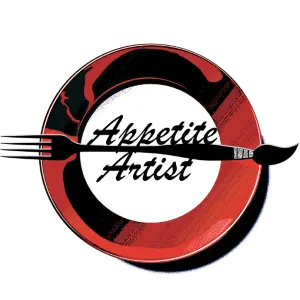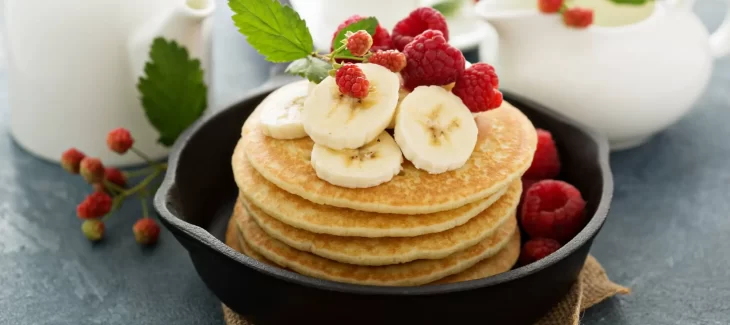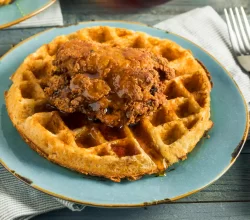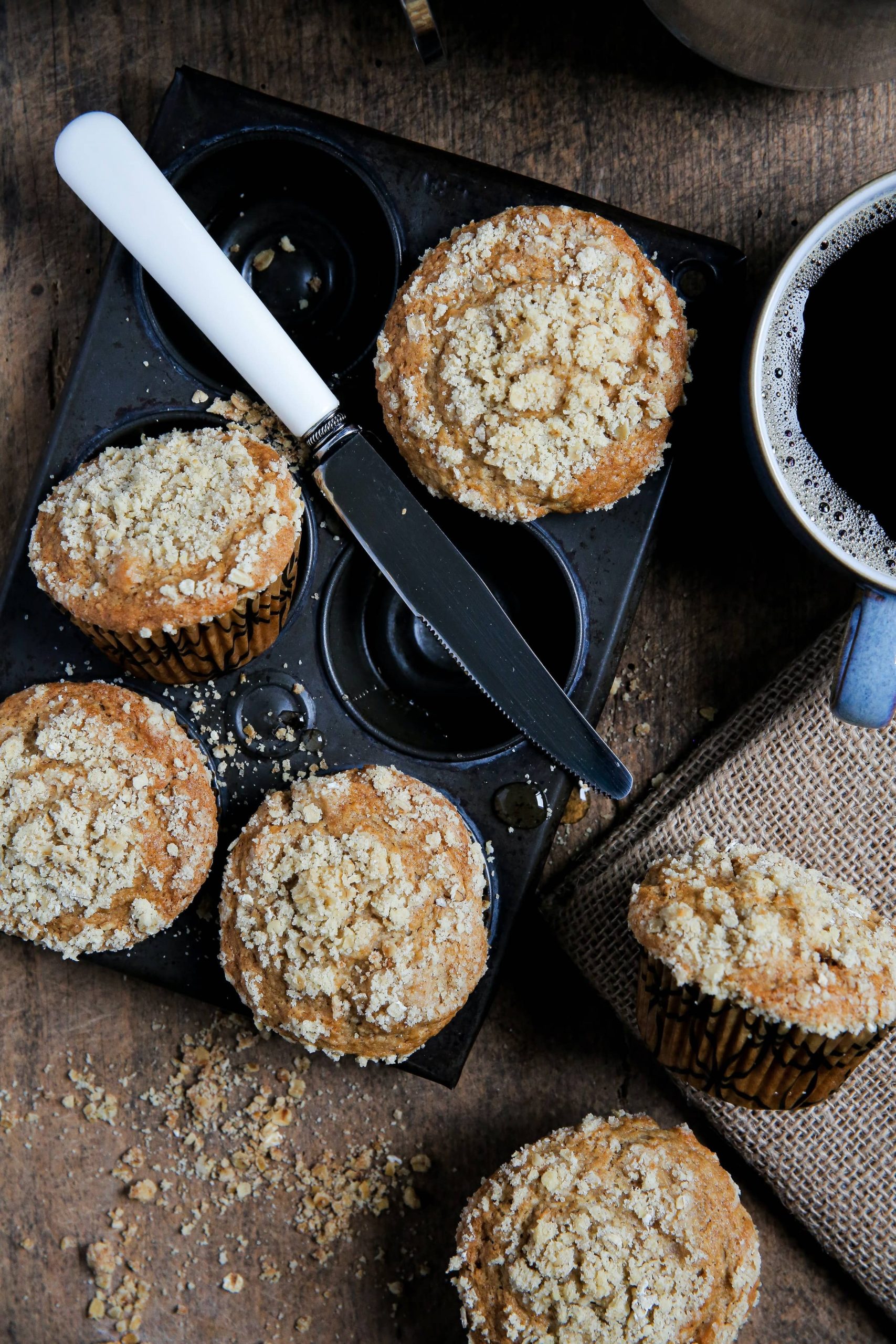Did you know you can cook pancakes in a cast iron skillet? When I used cast iron for the first time, I thought it would burn my pancakes like crazy because steel pans heat up so fast. A burnt pancake is essentially a ruined pancake, so I thought about treading carefully while doing this. But as it turns out, cast iron pancakes are actually really good-in fact, I would wager that cast iron is better than most other pans. The pancakes cook super fast, thanks to cast iron’s ability to retain heat very well. It’s also very forgiving, since you can always turn the heat down to prevent burning.
Ever since I started using cast iron for my pancakes, I didn’t want to go back. The end result tastes so much better and I’m starting to experiment with different toppings and fats for my pancakes. The seasoning opportunities that come with owning a cast iron pan helps enhance the flavor of ordinary pancakes. Later, I will show you an easy and repeatable recipe to help you make your own cast iron pancakes at home.
Why cook pancakes on a cast iron skillet?
Cooking homemade cast iron pancakes has some appealing advantages over using other pans and skillets. In general, cast iron pancakes have a more golden color and a smoother texture. Remember that the fluffiness of your pancakes will always depend on your water to flour ratio and the amount of baking powder you use. There are 4 very distinguishable benefits to using cast iron that other pans will most likely not be able to do for you.
Benefit 1: Cast iron pans support the natural shape of pancakes.
Typically, a cast iron pan has a flat, round surface area with cupped edges. This helps the pancake maintain its circular shape more easily. When we make pancakes at home, sometimes we have the urge to be lazy and use a pan that is not suitable for cooking pancakes. For example, square metal skillets are fantastic for making scrambled eggs and cooked broccoli, but it is terrible for making pancakes. So, a cast iron pan can be a consistent way to regularly cook top-tier pancakes in your own home.
Benefit 2: Cast iron pans are almost pure metal, so they cook pancakes more evenly.
Often, when making pancakes, the middle of the batter cooks faster than the edges, especially when using a normal skillet. When this happens, you get a pancake that is very black in the middle, and the edges may not have fully cooked yet. If you aren’t careful about the timing of your flip, the pancake becomes too burnt in the middle. However, cast iron is really nice because the heat it absorbs from the stove spreads equally to all parts of the pan. So not only does your pancake cook faster, it also has a natural spread of heat throughout your pancake’s entire surface area. If you ever wondered why restaurant pancakes taste so good, it’s because they are most likely using cast iron!
Benefit 3: Cast iron can infuse food with nutritional iron.
Second, cast iron pancakes absorb the iron that the pan is made of. Cast iron pots and pans have the potential to increase the iron content of the foods cooked in them by up to 16%. So when you cook pancakes in cast iron, their iron content increases, which is great since pancakes are normally iron-deficient. Iron is an essential mineral for the human body, and it provides many health benefits. Some of these benefits include strengthening the immune system, helping you sleep better at night, and helping your body carry oxygen to muscles more effectively.
Benefit 4: A cast iron pan gradually becomes smoother the more you use it.
The third benefit of using a cast iron pan is that the more you use it, the better it gets at cooking food. Unlike other pans, cast iron pans become smoother over time the more you use it (a process caused by cast iron seasoning, explained more in detail later). How does this work? It turns out that the more you cook cast iron with oil or fat, the more layers of seasoning are added to the pan. Over time, these layers build up and form a strong, nonstick coating surface. Just like a fine wine, cast iron only gets better with age.
The process of cast iron seasoning also works in baking recipes where you would put a cast iron pan in the oven. Whether you use cast iron on an electric stove or in an oven, allow the pan to cool off naturally after use. This will ensure the seasoning process builds your pan in an even layer over time.
Where to find a cast iron skillet

You can buy a cast iron skillet online from retailers like Amazon or Ebay, or you can buy them physically in certain retailers that sell home appliances or cooking items.
Prices for cast iron pans range from as low as $20 to as high as $200. Unless you are a seasoned cast iron veteran who cooks many different foods, you probably don’t need a $200 pan. The higher the price of your pan, the more features it may have or the more beautiful it looks, but these can be unnecessary if your goal is just to cook pancakes.
Lodge is one of the most prominent cast iron pan producers. Their pans usually cost around $30-70, and they are a great choice to buy since they already have a pre-seasoned pan. Other great cast iron makers include Smithey, Camp Chef, and Staub.
As for the size and shape of your pan, you may want to opt for a bigger cast iron pan (10-14 inches). This way, it gives you plenty of room to adjust your pancake size and be able to flip it easily. Cast iron pans can be heavy, though, so it helps to use a thick heat-resistant glove to support you during cooking.
Alternative pans to use
Carbon steel
A good carbon steel skillet is like the workhorse of the kitchen. It has gently sloped sides and a narrow handle which makes it easy to flip pancakes. Most importantly though, it has high heat tolerance, even more so than cast iron. However, carbon steel is prone to not heating up properly if the heat source is not large enough. If you use carbon steel, make sure your stove’s heat source is large enough to fit the pan.
Spun iron
Spun iron pans are nice because they retain heat as easily as cast iron, but they are lighter, making them easier to carry around. However, they are usually better at making dinner foods like eggs and potatoes rather than pancakes, because they tend to be thinner than cast iron.
A thin pan is especially detrimental to pancakes because the thinner the pan, the faster it is to heat the pan. So when you use a thin pan like spun iron, there may be a tendency for hot spots to form quickly and end up ruining your pancakes. Still, if you are careful, spun iron is a good alternative to cast iron that should be used in moderation.

How should you cook your cast iron pancakes?
Cooking with cast iron is similar to other pan types, but there are a few key pointers you need to keep in mind before using it.
Cast Iron Seasoning Tutorial
To season a cast iron pan, simply coat the pan with a very thin layer of oil (preferably flaxseed or grapeseed oil) and then heat it in an oven. This thin layer should be hand-rubbed into the pan or dampened with a paper towel. Effectively, this will create a chemical bond between the oil and the pan, which not only protects your pan from scars and abrasions, but also infuses your cast iron pancakes with the oil you used. This is the main reason why cast iron pancakes taste so good!
If you are using an older cast iron pan and start to notice uneven seasoning, simply wash your pan with soap and season it again. DO NOT season your skillet with butter or olive oil, as these two fat sources can actually ruin your pan.
After seasoning your pan, put the pan in the oven to complete the seasoning process. Place the empty skillet upside down on a heat-resistant rack or baking pan, set the temperature to 500°F, and let it bake in there for an hour. After it has finished, cook something fatty like steak or salmon to better cement the seasoning. And then, voila! Your cast iron pan is ready to cook awesome pancakes.
Preheat your skillet before use
Cast iron tends to cook pancakes more thoroughly if you let it preheat on the stove for about five minutes. By preheating the pan, you eliminate the chance of having certain spots being far hotter than others, which can roast your pancakes.
Clean your skillet thoroughly after using it
There are four important steps to follow to clean your pan after you are done using it.
1) To avoid rusting your pan, lather a sponge with a small amount of water and soap. Then, thoroughly scrub the inside of the pan. Do not soak the pan in running water.
2) Pour a small amount of kosher salt in the pan, scrub it around with a paper towel, then rinse the pan quickly in hot water.
3) Completely dry the skillet with the same paper towel.
4) Take another paper towel, moisten it with a thin layer of oil, then coat the pan with it. Store it in a dry place.
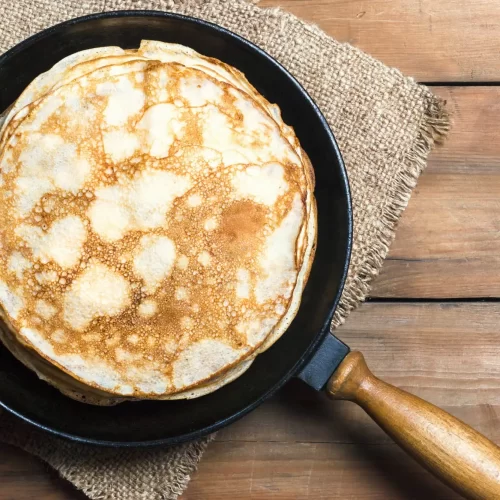
Homemade Basic Cast Iron Pancakes
Equipment
- 1 whisk/wooden spatula
Ingredients
- 1 cup AP flour
- 2 tbsp white granulated sugar/light brown sugar
- 1 tbsp baking powder
- ¼ tsp salt
- 1 large egg
- 1 cup milk of your choice buttermilk is great for richness
- 2 tbsp unsalted butter melted
- 1 tsp vanilla extract for flavor
- nonstick cooking spray/oil for pan lubrication avoid olive oil and butter
Instructions
- In a medium bowl, whisk together the flour, sugar, baking powder, and salt.
- In a separate large bowl, whisk together the eggs until they form a smooth liquid. Add in the milk, melted butter, and vanilla extract and mix well.
- Create a hole in the center of your dry bowl, then pour the wet mixture into it. Use your whisk or a wood spoon to mix everything together until there are no clumps. After your batter is completely smooth, let it sit for 5-10 minutes to settle.
- Preheat a cast iron pan over medium heat for 5 minutes. Addoil or spray your skillet, then pour in the batter until the pancake’s size isto your liking.
- Once the bottom of the pancake becomes golden-brown, flip it over with a spatula and lower the heat down to medium-low. Once the pancake is cooked, set it on a dish.
- Repeat steps 4-5 until the batter is finished. Keep the heat on medium-low the entire time while cooking.
- Serve with syrup, powdered sugar, fruit puree, or any topping of your choice.
